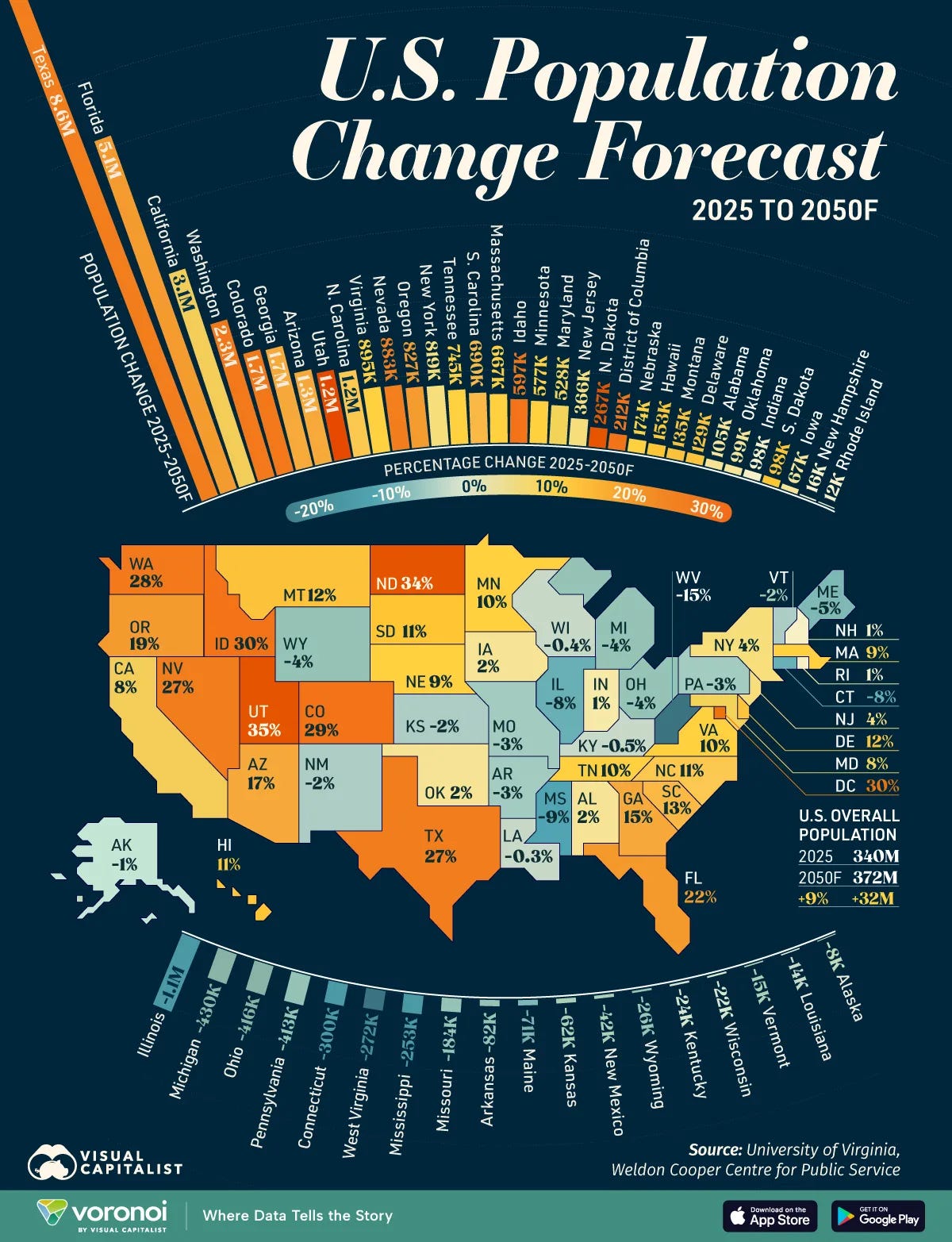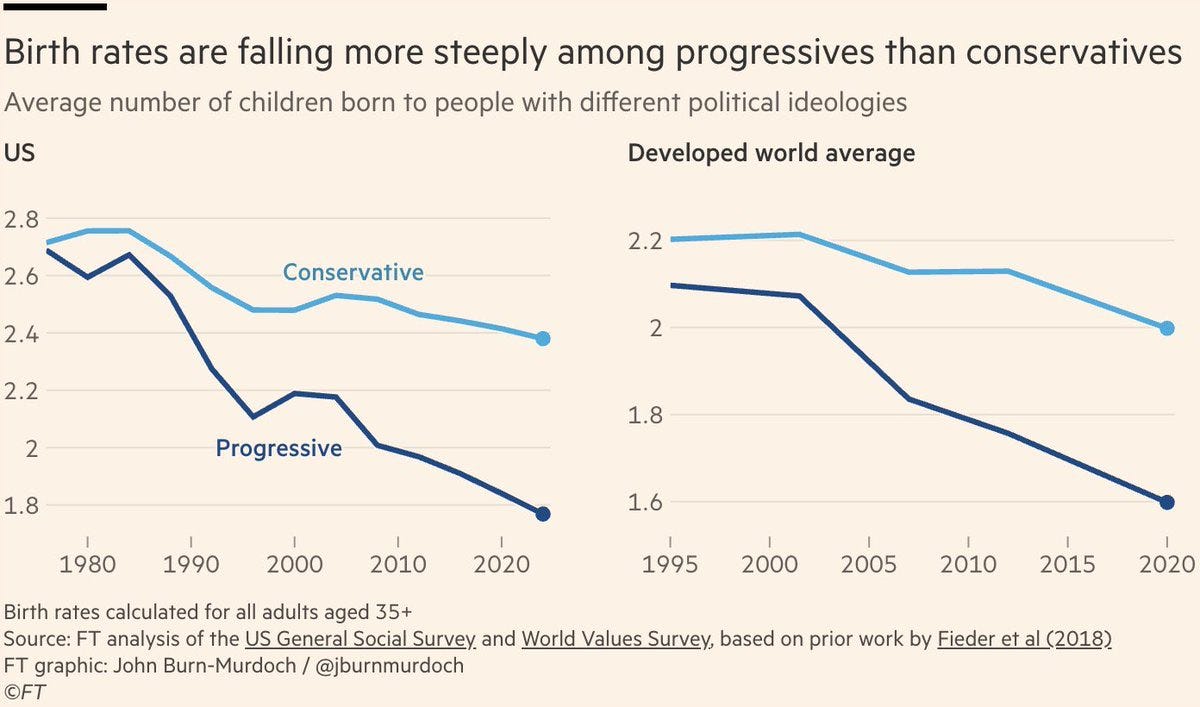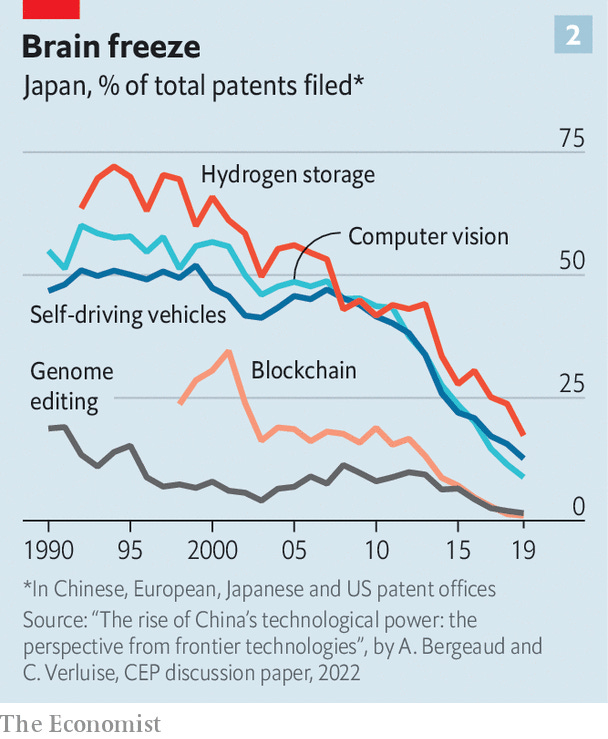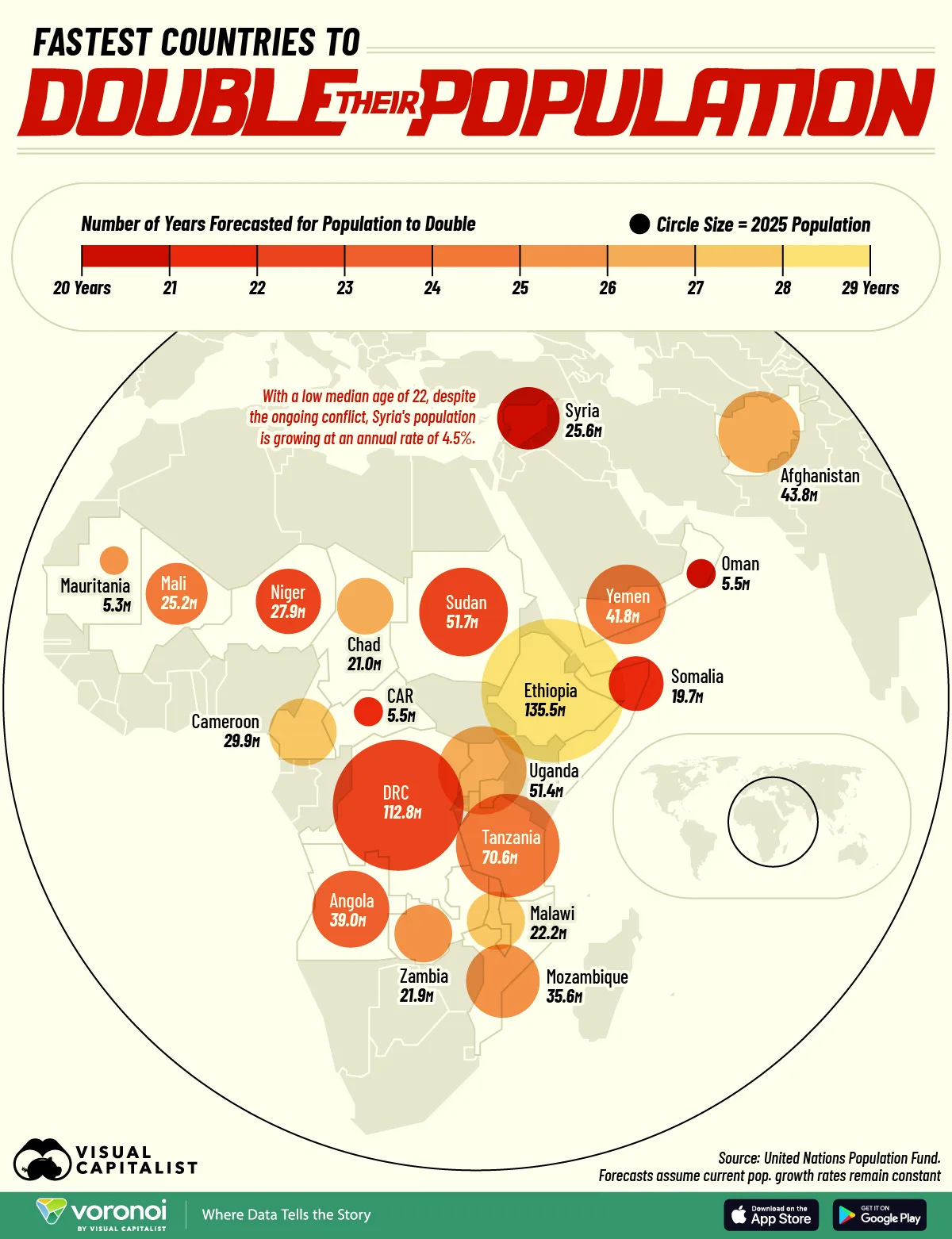Repronews #76: Chinese researchers remove extra chromosomes from embryo, leads to healthy birth
US to expand access to fertility insurance, IVF drugs | OECD on demographic change | charts! | polygenic score for IQ | genetics of obesity | genetics of food taste & craving | James Watson RIP

Welcome to the latest issue of Repronews! Highlights from this week’s edition:
Repro/genetics
Chinese researchers have removed an extra set of chromosomes from an embryo, eventually resulting in a health birth.
U.S. President Donald Trump will enable access to cheaper IVF drugs and encourage employers to offer fertility insurance.
Population Policies & Trends
The OECD has issued guidelines for all levels of government to better manage demographic change.
Genetic Studies
Embryo selection startup Herasight has published a study on polygenic prediction of intelligence.
13 obesity-related genes have been identified in a multi-ancestry study.
Better understanding of the genetics of food cravings and aversions could lead to personalized nutrition plans to improve health.
Further Learning
James Watson, the co-discover of the double-helix structure of DNA, has passed away: his comments on genetic enhancement and love.
Repro/genetics
“Baby born from embryo that originally had three sets of chromosomes” (PET)
A Chinese study reports how an embryo with originally three pronuclei resulted in a healthy baby after one pronucleus was microsurgically removed.
After fertilization, a normal zygote has two pronuclei, one from the egg and one from the sperm, each containing chromosomes.
The mother’s eggs were fertilized and produced seven embryos each with three pronuclei.
Tripronuclear embryos would normally be discarded. However, the mother was offered the technique of microsurgical enucleation. This involves removing one of the pronuclei in a procedure similar to how pronuclei are transferred to the donor cell during mitochondrial donation.
The researchers performed enucleation on six zygotes. Two of the enucleated embryos progressed to the blastocyst stage of development.
The blastocysts underwent non-invasive genetic testing to check for chromosomal abnormalities. One was selected for transfer and developed into a healthy baby boy, who showed normal health and development after birth.
The authors write: “The removal of one [pronuclei] from a [triponuclear] zygote is not a routine procedure in assisted reproductive technology. It should only be considered as an experimental rescue measure.”
The researchers hope the technique may be used more widely in future “for cases where oocytes are extremely precious, such as patients with poor ovarian response,” or for those who cannot undergo further egg collection cycles for medical or financial reasons.
“Trump unveils plan to expand access to ‘fertility insurance’ and IVF drugs” (TIME)
President Donald Trump has announced that his administration will encourage employers to offer fertility benefits to their employees, similar to dental or vision coverage.
He also revealed an agreement with EMD Serono to provide cheap fertility medications at “massive discounts” through the government website TrumpRx.
“We’ll dramatically slash the cost of IVF and many of the most common fertility drugs for countless millions of Americans,” Trump said.
New Labor Department guidance aims to make it easier for companies to add fertility coverage for their employees. The White House is neither mandating participation, nor subsidizing employers that choose to offer the coverage.
Trump said the fertility coverage “will reduce the number of people who ultimately need to resort to IVF, because couples will be able to identify and address problems early.” He added: “The result will be healthier pregnancies, healthier babies, and many more beautiful American children.”
Currently around one in four large employers in the U.S. provide IVF coverage.
Drugs are only one component of IVF procedures. Patients also pay for ultrasounds, anesthesia, laboratory work and embryo storage, which together can exceed $20,000 per round.
During the 2024 campaign, Trump had pledged to require insurers to cover fertility treatment.
Sean Tipton, Chief Advocacy and Policy Officer at the American Society for Reproductive Medicine (ASRM), said an “executive action cannot, on its own, ensure every patient who needs IVF—which for some represents the only option to have a child—can access it,” but the announcement is a “crucial first step.”
RESOLVE, the National Infertility Association, said the announcement “sends a signal to policymakers and employers that infertility is deserving of coverage – a necessity rather than a luxury. However, the potential impact for patients depends on what happens next.”
More on repro/genetics:
“An egg economy: In vitro maturation (IVM)” (Roger Gosden)
Matt Ridley, “CRISPR gave humans the ability to edit the genes of any animal, plant, fungus or microbe. What will we do with it?” (Globe & Mail)
LSE/Vienna study: “Many women over 43 need donor eggs for IVF success” (PET)
Policy Paper: For Inclusive Fertility Care for All (Fertility Europe)
“Information about elective egg freezing on Instagram reels: a content review” (JARG)
“The AI genetics revolution is coming: We’re worrying about the wrong arms race with China” (The New Atlantis)
A review of Dr. Anna Molas’ Taming Egg Donors: The Egg Donation Reproductive Market in Spain (PET)
“IVF inequality highlighted in British Parliament” (PET)
Population Policies & Trends
“OECD guidelines on the multi-level governance of demographic change” (OECD)
The OECD has issued guidelines to for governments to manage demographic change, notably to ensure that “shrinking and ageing regions are not left behind, but supported through strategic adaptation, innovation and solidarity.”
Integrate demographic projections and foresight tools into strategic planning to ensure policies and investments are future-proof.
Territorialize sectoral policies to promote integrated, place-based responses to demographic change within and across regions.
Coordinate across levels of government and functional areas to adapt services and investments efficiently, especially in small or shrinking municipalities.
Strengthen participatory governance to revitalize communities and enhance trust.
Attract, retain and develop public sector capacity in shrinking areas to maintain essential services and institutional resilience.
Ensure fiscal frameworks are responsive to demographic change.
Adjust infrastructure and service delivery systems to reflect evolving demographic needs.

More on population policies and trends:
“Rationality of women in fertility decisions: An intergenerational study in rural Indonesian contexts” (International Journal of Population Studies)
“The ethics of population policy for the two worlds of population conditions” (Health Care Analysis)
“Make American procreate again: Among the MAGA fertility fanatics” (The Economist)
“Communist pronatalism” (Aporia)
Genetic Studies
“A new polygenic score for intelligence” (Aporia)
Herasight, an embryo selection company, has published a validation study on within-family polygenic prediction of general cognitive ability, i.e. predicting intelligence based on the contribution of many genes.
Their polygenic score (PGS) claims to predict 16% of variance in intelligence in a sample of the UK Biobank.
According to the paper: “Our PGS predicts higher educational attainment, occupational status, and family income within families, and retains good performance in non-European ancestry samples, with the correlation retaining 64% of its magnitude in [an] African American subset.”
The polygenic score for intelligence was found to also be partially correlated with other traits, such as reduced likelihood of ADHD, sleep problems, type 2 diabetes, and some cardiovascular diseases.
“Obesity-related genes revealed in multi-ancestry study” (PET)
A study in Nature Communications has identified 13 obesity-related genes.
Five of these genes had not been previously associated with diabetes and were discovered thanks to the inclusion of non-European genomes.
“Obesity is a complex trait that is influenced by many genetic and lifestyle factors,” said Professor Santhosh Girirajan. “Studies in a single population can lead us to miss important genes that are shared across populations but may not rise to statistical significance in any one of them, even if they are clinically important in that population.”
The study used data from the UK Biobank and the U.S.-based All of Us biobank, with participants of African, American, East Asia, European, Middle Eastern, and South Asian ancestry.
“Some of the previously discovered obesity genes appear to only have significant association to obesity in Europeans, which could limit their potential as therapeutic targets for a global population,” said Professor Girirajan.
“The genetics of food cravings and aversions” (GLP/University of Colorado)
Geneticist Dr. Joanne Cole of the University of Colorado has identified hundreds of regions of the human genome associated with liking food.
Some of these genetic variations influence how strongly taste receptors bind to different food compounds.
“Each person is genetically at risk for a different set of conditions,” said Dr. Cole. “We should be targeting each individual’s genetic disease risk with disease-tailored lifestyle interventions.”
The research may pave the way for genetically-informed personalized nutrition plans.
More on genetic studies:
“Male and female human fetuses show distinct patterns of gene activity” (PET)
“Genomics of pregnancy loss” (JARG)
Further Learning
DNA pioneer James Watson passes away at 97
James Watson, the co-discoverer of the double-helix structure of DNA together with Francis Crick, has passed away at the age of 97.
The Nobel Prize-winner attracted controversy in his later years.
In his 2003 book DNA: The Secret of Life, Watson recounted how he was attacked in German media for suggesting using reproductive technologies for genetic health and enhancement.
He wrote: “My view is that, despite the risks, we should give serious consideration to germline gene therapy. I only hope that the many biologists who share my opinion will stand tall in the debates to come and not be intimidated by the inevitable criticism. Some of us already know the pain of being tarred with the brush once reserved for eugenicists. But that is ultimately a small price to pay to redress genetic injustice.”
He concluded: “Love, that impulse which promotes our caring for one another, is what has permitted our survival and success on the planet. It is this impulse that I believe will safeguard our future as we venture into uncharted genetic territory. So fundamental is it to human nature that I am sure that the capacity to love is inscribed in our DNA—a secular Paul would say that love is the greatest gift of our genes to humanity. And if someday those particular genes too could be enhanced by our science, to defeat petty hatreds and violence, in what sense would our humanity be diminished?”
Watson came under particular fire in recent years for suggesting there are genetic causes for racial differences in intelligence.
More on human nature, biotechnology, and evolution:
Interview with Steven Pinker, “Humor, the causes of war, and everything in between” (Richard Hanania)
“Republican states win case striking down rule protecting transgender health care rights” (Washington Blade/GLP)
U.S. Senator Todd Young (R-IN), Chair of the National Security Commission on Emerging Biotechnology (NSCEB), “How America can win the biotech race” (Foreign Affairs)
“A liver extracted from a genetically modified pig transplanted into a 71-year-old man” (New York Times/GLP)
“AI chip-powered retinal implant shown to help blind victims see again” (Science Daily/GLP)
“Britain’s landmark agricultural gene editing law kicks in next month. Here’s what to expect” (MSN/GLP)
Disclaimer: We cannot fact-check the linked-to stories and studies, nor do the views expressed necessarily reflect our own.






